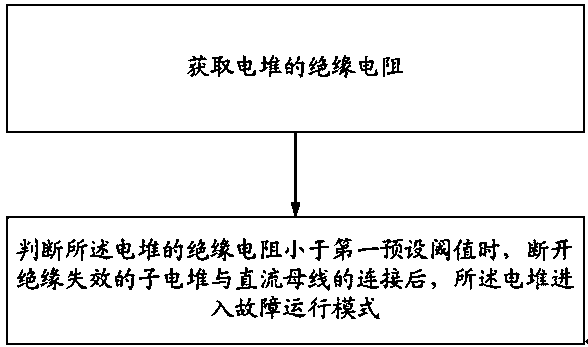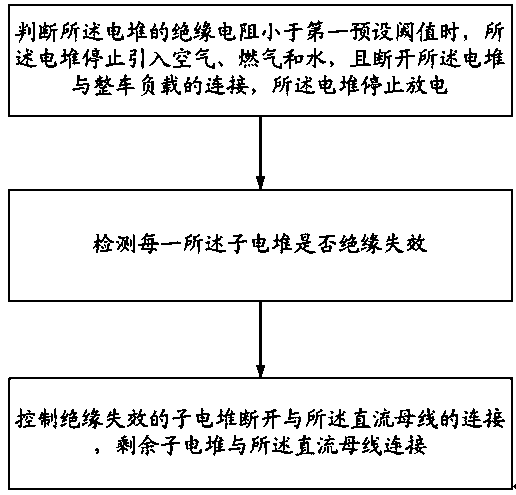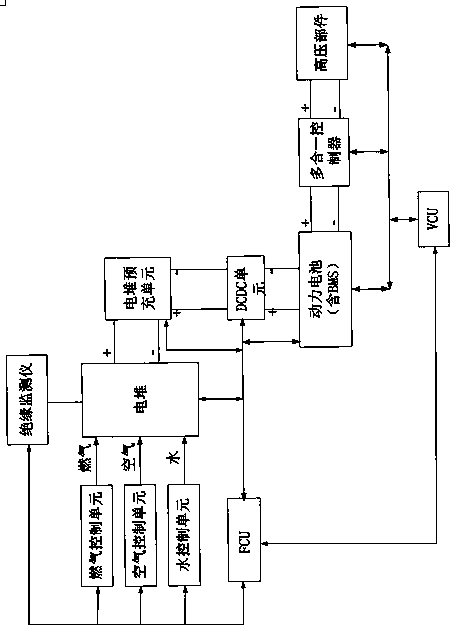Control method and system of electric vehicle electric pile of fuel cell
A fuel cell and control method technology, which is applied in battery/fuel cell control devices, fuel cells, electric vehicles, etc., can solve the problems of burning out the stack, high risk, and low safety performance of the stack, so as to improve safety performance, The effect of avoiding deterioration of failure
- Summary
- Abstract
- Description
- Claims
- Application Information
AI Technical Summary
Problems solved by technology
Method used
Image
Examples
Embodiment Construction
[0058] The following will clearly and completely describe the technical solutions in the embodiments of the present invention with reference to the accompanying drawings in the embodiments of the present invention. Obviously, the described embodiments are only some, not all, embodiments of the present invention. Based on the embodiments of the present invention, all other embodiments obtained by persons of ordinary skill in the art without making creative efforts belong to the protection scope of the present invention.
[0059] As mentioned in the background technology, the fuel cell electric vehicles in the prior art do not have the protection function of the stack insulation failure, which will lead to the deterioration of the stack insulation failure and burn out the stack. The safety performance is low and the risk is high.
[0060] Based on this, the present application provides a control method and system for a fuel cell electric vehicle stack. The control method include...
PUM
 Login to View More
Login to View More Abstract
Description
Claims
Application Information
 Login to View More
Login to View More - Generate Ideas
- Intellectual Property
- Life Sciences
- Materials
- Tech Scout
- Unparalleled Data Quality
- Higher Quality Content
- 60% Fewer Hallucinations
Browse by: Latest US Patents, China's latest patents, Technical Efficacy Thesaurus, Application Domain, Technology Topic, Popular Technical Reports.
© 2025 PatSnap. All rights reserved.Legal|Privacy policy|Modern Slavery Act Transparency Statement|Sitemap|About US| Contact US: help@patsnap.com



